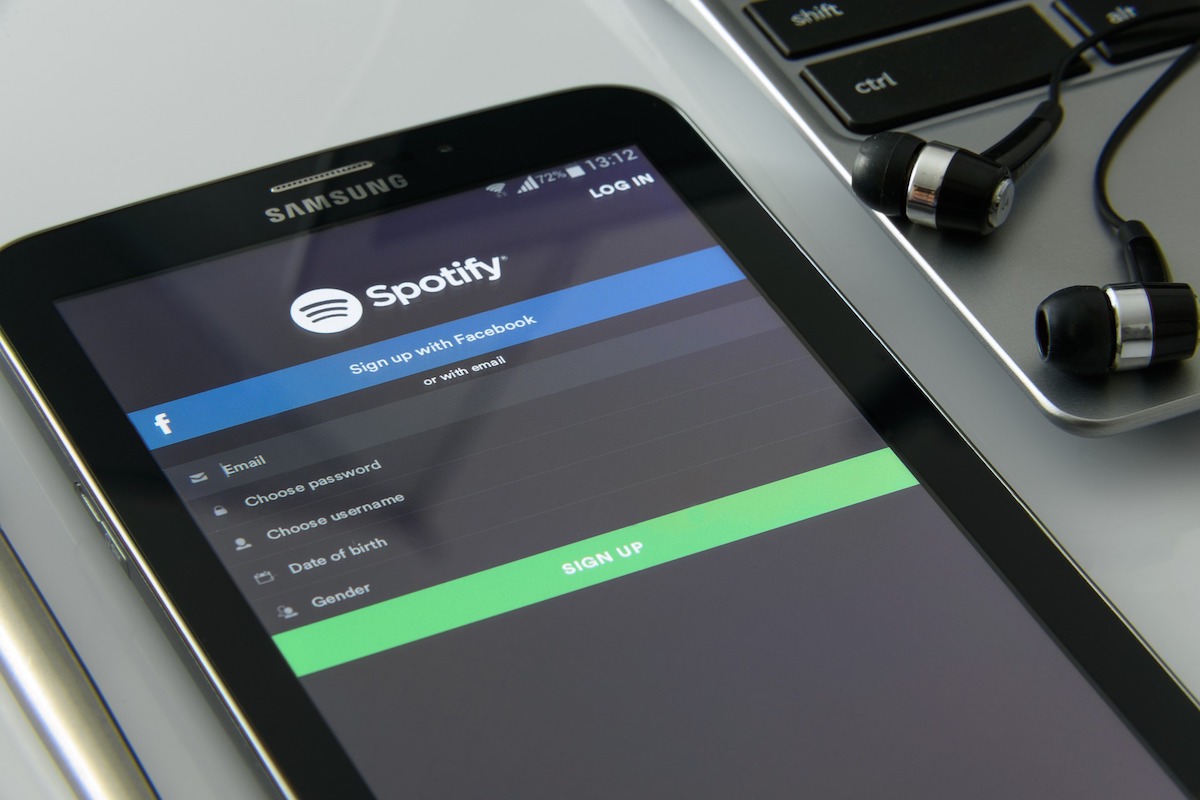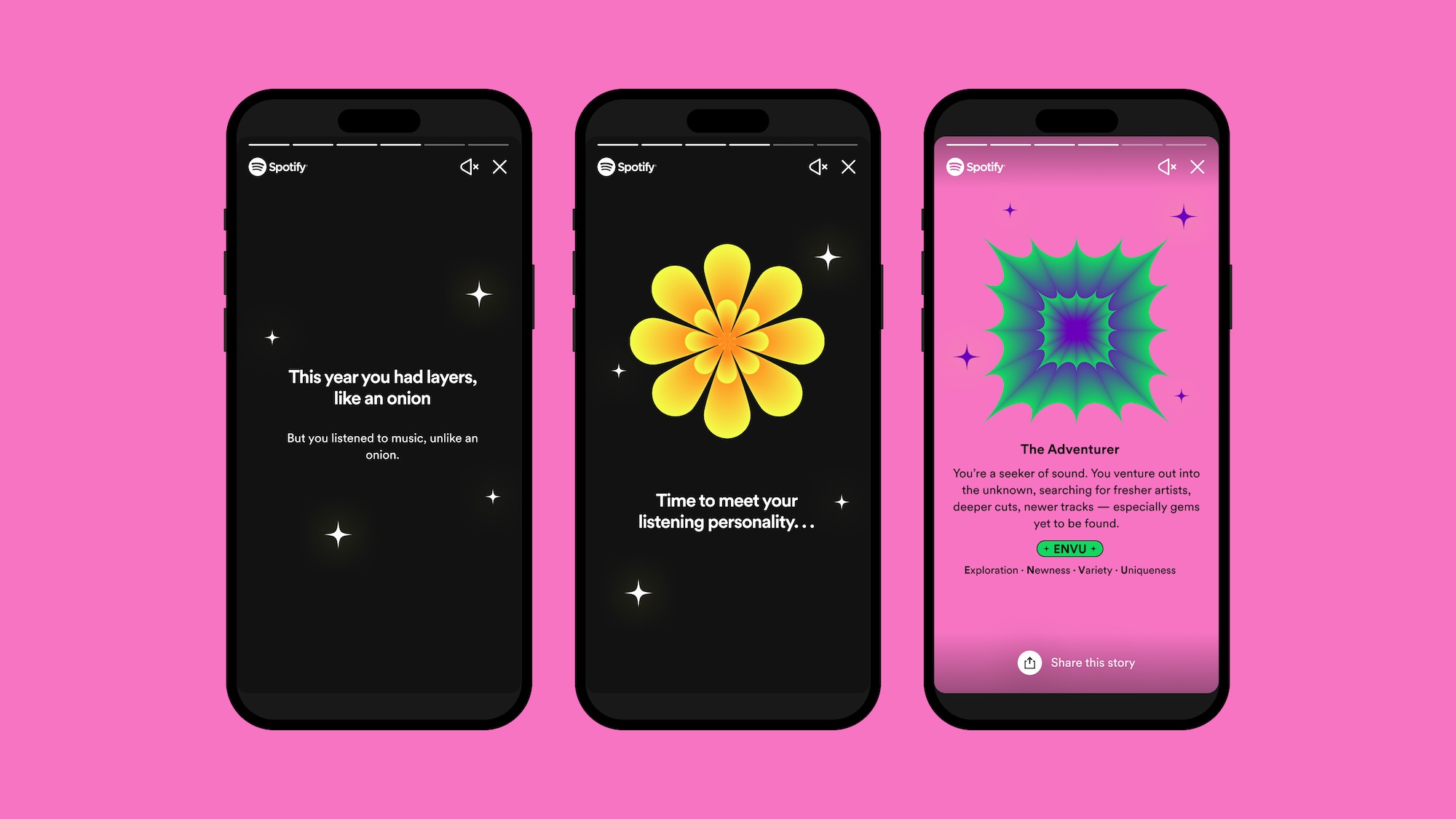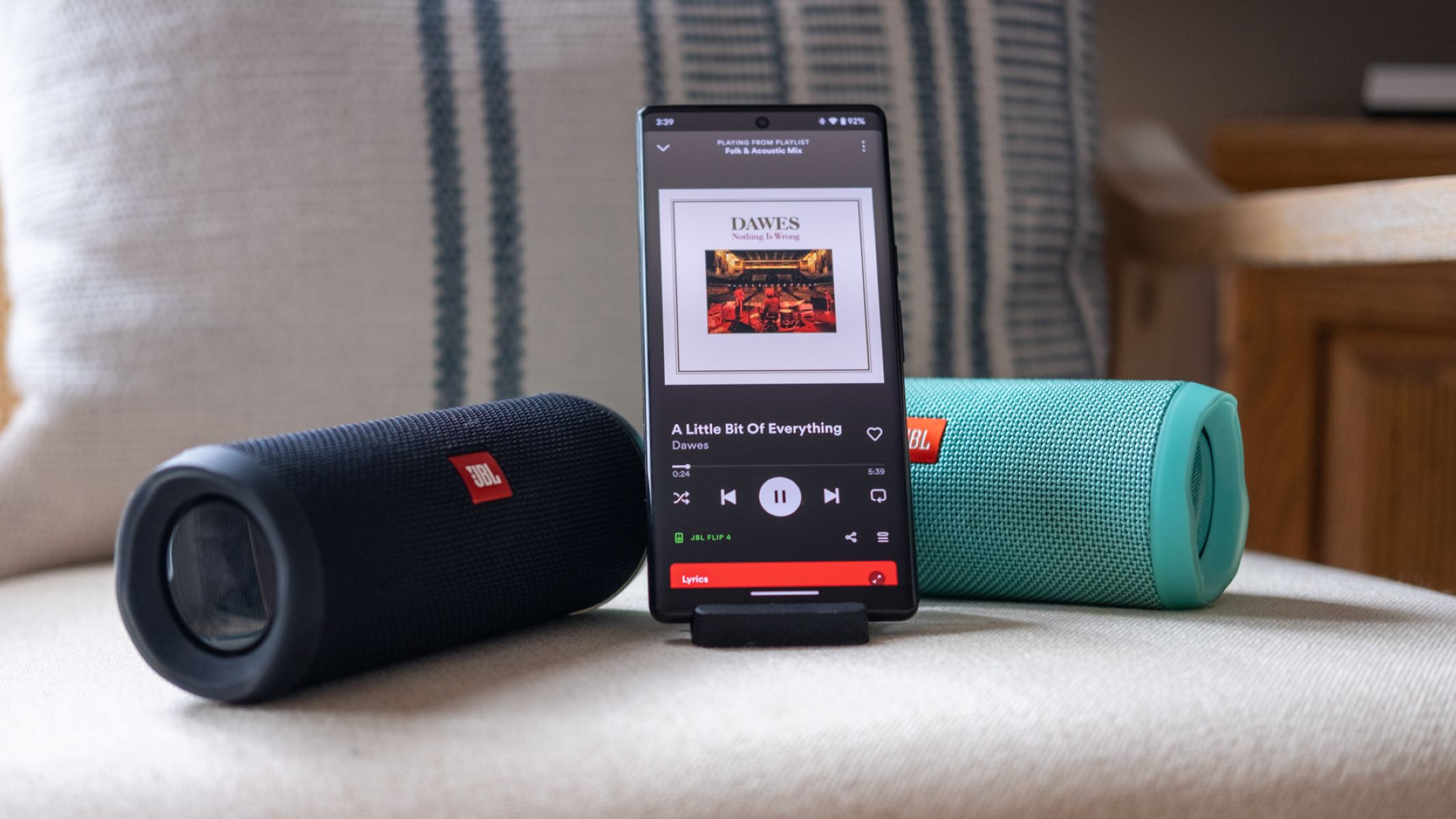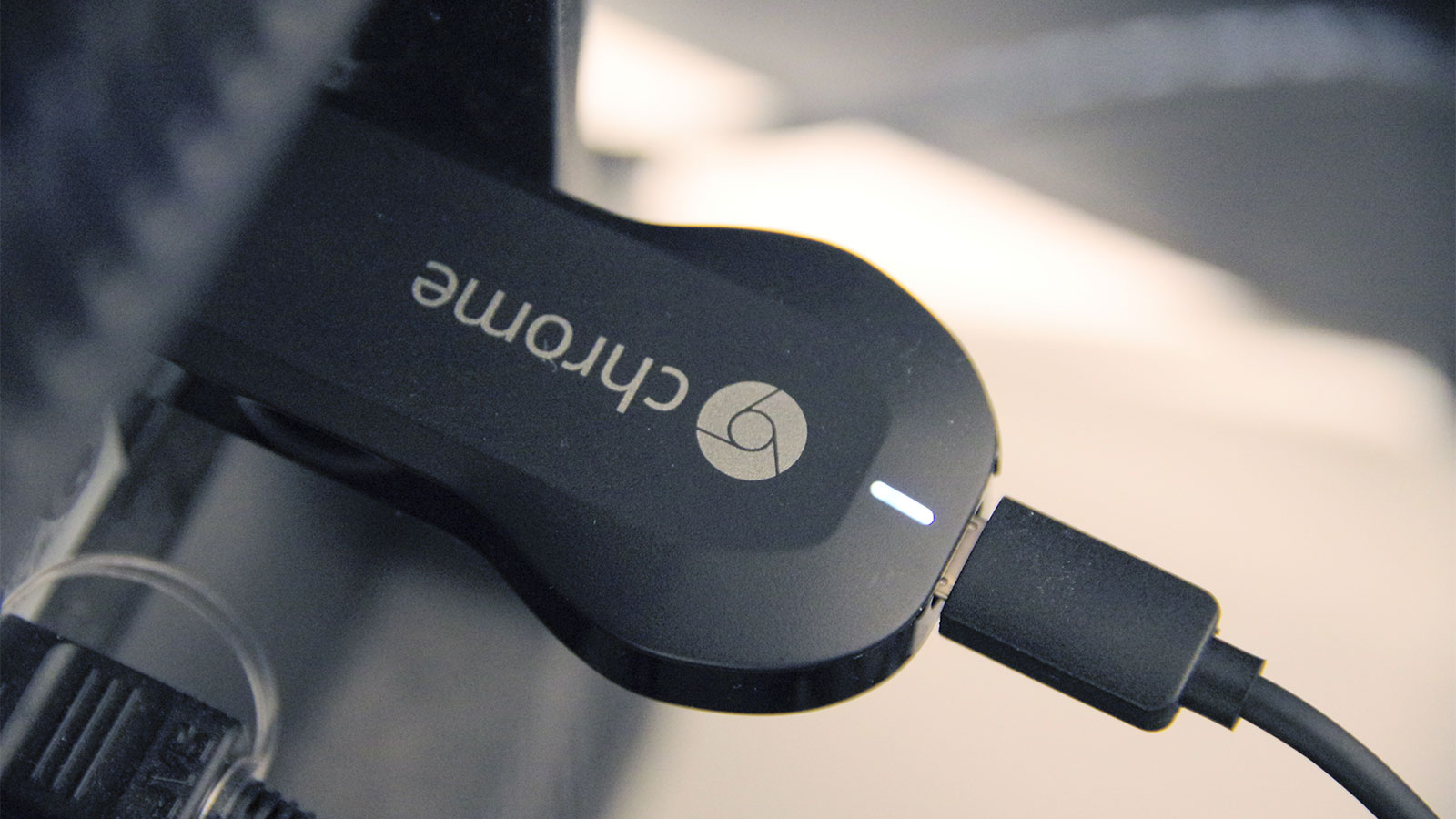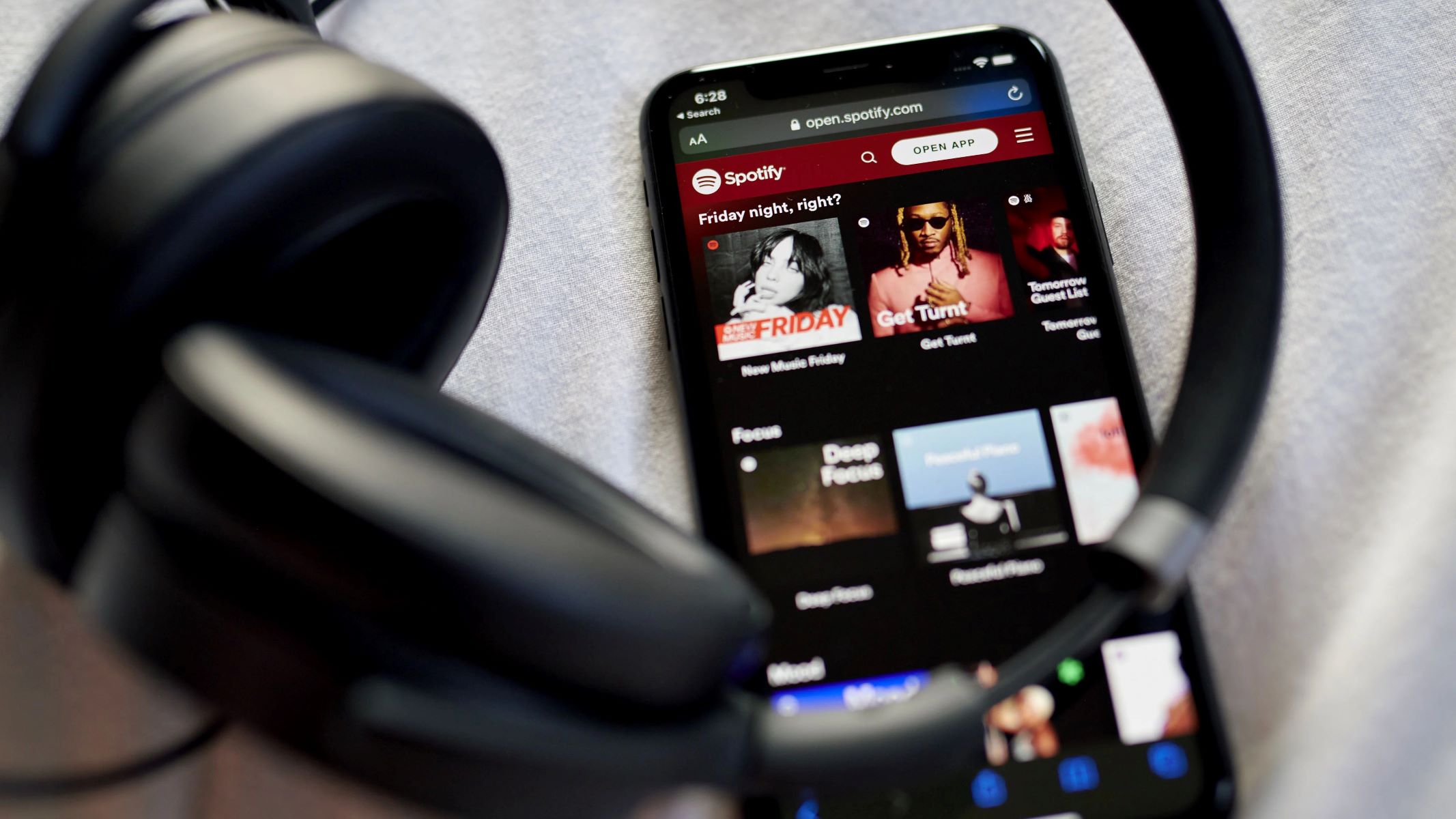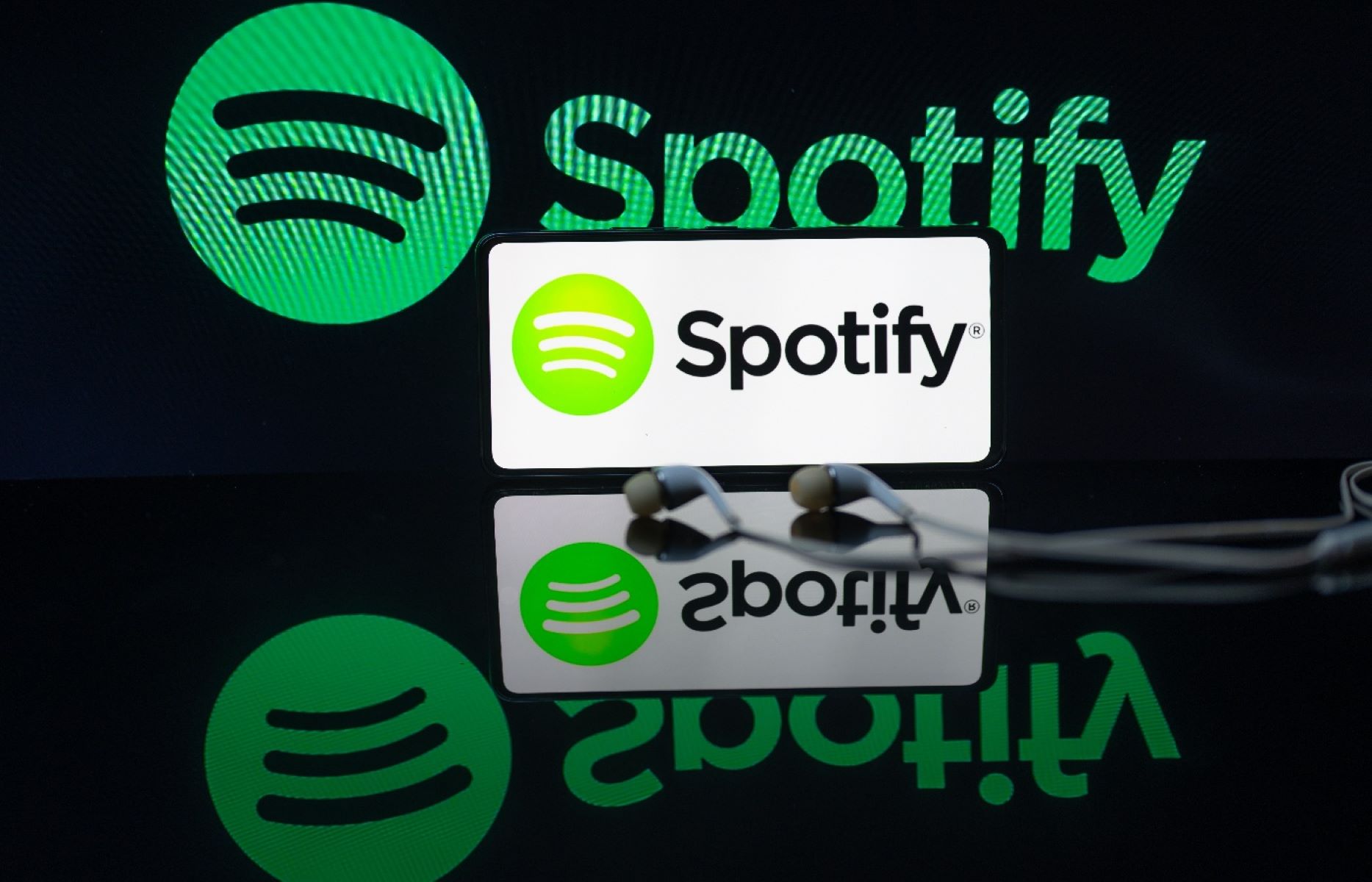Introduction
In today’s digital age, the music streaming industry is booming, with platforms like Spotify leading the way. Spotify has revolutionized the way we consume music, providing users with access to millions of songs at their fingertips. However, what sets Spotify apart from its competitors is its effective use of big data.
Big data refers to the vast amount of information that is generated every day from various sources, such as social media, online interactions, and user behavior. By harnessing this data, companies like Spotify can gain valuable insights into user preferences, trends, and patterns. These insights are then utilized to improve the user experience, provide personalized recommendations, and optimize the platform’s overall functionality.
In this article, we will explore how Spotify utilizes big data to enhance its service. We will delve into the processes through which Spotify collects and analyzes user data, the algorithms used to personalize recommendations, and how big data is leveraged to improve the experience for both users and artists.
By the end of this article, you will have a comprehensive understanding of the role big data plays in Spotify’s success and how it has revolutionized the music streaming industry.
Overview of Spotify
Spotify, founded in 2006, is a leading music streaming platform that has gained immense popularity worldwide. With over 345 million active users, including both free and premium subscribers, Spotify has become the go-to destination for music lovers of all genres.
The platform offers a vast library of music spanning various genres, languages, and cultures. From the latest chart-toppers to hidden gems, Spotify ensures that there’s something for everyone. Users can access their favorite music anytime, anywhere, whether it’s on their computers, smartphones, or smart speakers.
One of the key features of Spotify is its ability to personalize the music listening experience for each user. By leveraging big data, Spotify understands individual preferences, music taste, and listening habits. This enables the platform to deliver highly curated playlists and recommendations that align with users’ unique musical preferences.
Moreover, Spotify offers various features that enhance the overall experience. Users can follow their favorite artists, create and share playlists, discover new music through curated playlists and radio stations, and even collaborate with friends on shared playlists.
Aside from its user-centric approach, Spotify also supports artists by providing them with a platform to promote their music, connect with fans, and generate revenue. Spotify’s artist-centric features include artist profiles, analytics tools to track performance, and the ability to improve discoverability and reach through curated playlists and algorithmic recommendations.
In summary, Spotify is more than just a music streaming platform. It is a comprehensive ecosystem that empowers both music listeners and creators, leveraging big data to create an unparalleled personalized music experience.
What is Big Data?
In today’s tech-driven world, data is being generated at an unprecedented rate. Big data refers to the massive volume of structured and unstructured data that is continuously generated from various sources such as social media, websites, devices, and applications. This data is characterized by its volume, velocity, variety, and veracity.
The volume aspect of big data refers to the sheer quantity of data that is being generated. Every click, search, purchase, and interaction contributes to the ever-increasing data pool. For platforms like Spotify, these vast amounts of data are collected from millions of users who stream music, create playlists, like songs, and share their preferences.
The velocity factor emphasizes the speed at which data is being generated and processed. With the rise of real-time streaming and social media platforms, data is collected and analyzed in near real-time. For Spotify, this means that they can capture user behavior and preferences as they occur, allowing for immediate insights and adjustments in their service.
Another significant aspect of big data is its variety. Data comes in various formats, from structured data like user profiles and song metadata to unstructured data like comments, reviews, and social media posts. Spotify collects and analyzes data from multiple sources, such as user interactions, third-party APIs, and external metadata providers, to paint a comprehensive picture of individual preferences and music trends.
The veracity of big data refers to its quality and accuracy. With large datasets, there is always the challenge of noise, duplication, and inconsistencies. Ensuring data accuracy and quality is crucial in order to derive meaningful insights. Spotify employs data cleansing techniques to remove duplicate and irrelevant data, ensuring that the analytics and recommendations are based on reliable and accurate information.
Overall, big data plays a pivotal role in providing insights that were not previously possible. By harnessing the power of big data, companies like Spotify can gain a deeper understanding of user preferences, behavior, and trends, ultimately improving their service and creating a more personalized music experience for their users.
How Does Spotify Collect Data?
Spotify collects data from various sources to gain insights into user preferences and behavior. Here are some of the key methods through which Spotify collects data:
- User Registration: When users sign up for a Spotify account, they provide basic information such as age, gender, and location. This demographic data helps Spotify understand the user base and tailor recommendations accordingly.
- User Interactions: Spotify collects data on user interactions within the platform. This includes actions such as song plays, likes, skips, playlist creation, and adding songs to personal libraries. By analyzing these interactions, Spotify can identify user preferences, favorite genres, and artists.
- Streaming Data: As a music streaming platform, Spotify collects data on the songs users stream, the duration of streams, and how often certain songs or artists are listened to. This data helps Spotify create personalized recommendations and curated playlists based on individual listening habits.
- Social Media Integration: Spotify integrates with social media platforms like Facebook, allowing users to share their music activities with friends and discover new music based on their social connections. This integration provides Spotify with additional data on user interests and music tastes.
- Third-Party APIs: Spotify leverages third-party APIs and data partnerships to enhance the quality and breadth of their data. For example, they collaborate with music labels and aggregators to access metadata such as song titles, artist information, and album details.
- Device Information: Spotify’s mobile and web applications collect data on the devices users use to stream music. This includes information on the device model, operating system, and network settings. Device data helps optimize the user experience and ensure compatibility across different platforms.
All the data collected by Spotify is handled with utmost privacy and security. Users have control over their data and can manage their privacy settings within the app. Spotify adheres to strict data protection regulations to safeguard user information.
By collecting and analyzing data from various sources, Spotify gains valuable insights into user preferences, behavior patterns, and trends. This data-driven approach allows Spotify to deliver personalized recommendations, curated playlists, and a seamless music streaming experience for its users.
Analyzing User Data
Once Spotify collects user data, it goes through a rigorous analysis process to extract meaningful insights. The analysis of user data enables Spotify to understand user preferences, identify trends, and improve the overall user experience. Here are the key steps involved in analyzing user data:
Data Cleansing: Before analysis can begin, data cleansing is performed to ensure the accuracy and integrity of the data. This involves removing duplicate entries, correcting inconsistencies, and handling missing or incomplete data. By cleansing the data, Spotify can ensure that the insights derived from the analysis are based on high-quality and reliable information.
Segmentation: Spotify segments its user base based on various criteria, such as music genres, listening habits, user behavior, and demographic information. This segmentation helps in understanding different user groups and tailoring recommendations and personalized playlists specific to each segment. It allows Spotify to provide a more customized and targeted music experience for its diverse user base.
Pattern Recognition: Spotify utilizes advanced analytical techniques and algorithms to identify patterns and trends in user data. This can include identifying frequently played songs, popular artists, preferred genres, and exploring correlations between different user actions. By recognizing these patterns, Spotify can make data-driven decisions to improve its recommendation algorithms and enhance the user experience.
Collaborative Filtering: One of the powerful techniques used by Spotify is collaborative filtering. This approach involves analyzing the listening habits and preferences of similar users to make recommendations. By examining user interactions, song preferences, and playlist creations, Spotify can recommend songs and artists that align with a user’s taste, even if they haven’t listened to them before. Collaborative filtering enables Spotify to discover new music for users and broaden their musical horizons.
Machine Learning: Spotify utilizes machine learning algorithms to understand and predict user behavior. By training models on vast amounts of user data, Spotify can make accurate predictions on what songs, playlists, or genres a user is likely to enjoy. This leads to highly personalized recommendations and suggestions tailored to each individual user.
Continuous Iteration: Spotify’s data analysis is an ongoing process. As new data is collected, the analysis is updated and iterated upon. This allows Spotify to adapt to changing user preferences, evolving music trends, and emerging patterns. The continuous iteration ensures that Spotify’s recommendations and user experience remain relevant and up-to-date.
Through the analysis of user data, Spotify gains valuable insights that drive the improvement of its recommendation algorithms and the overall music streaming experience. This data-driven approach helps Spotify deliver music that resonates with each user’s preferences, keeping them engaged and satisfied.
Personalized Recommendations
One of the key advantages of Spotify’s data-driven approach is its ability to deliver personalized recommendations to each user. By analyzing user data, Spotify can understand individual preferences, music tastes, and listening habits, allowing it to curate a personalized music experience. Here’s a closer look at how Spotify provides personalized recommendations:
Music Genome: Spotify’s music recommendation system is built on a comprehensive “Music Genome” that categorizes songs based on various attributes such as genre, tempo, mood, and instrumentation. This detailed classification system allows Spotify to understand the musical characteristics of each song, serving as a foundation for recommendations.
User Similarity: Spotify’s recommendation algorithm utilizes collaborative filtering techniques to find users with similar music preferences. By identifying users who have similar listening habits and musical tastes, Spotify can leverage their preferences to make recommendations to other users. This approach enables Spotify to discover new artists, songs, and genres that are likely to resonate with each individual user.
Discovery Weekly: One of Spotify’s notable features is the “Discover Weekly” playlist. This playlist is generated every week for each user, using a combination of their listening history, liked songs, and similar listeners’ preferences. Discover Weekly introduces users to new songs and artists that they may have not encountered before, tailored specifically to their musical interests.
Release Radar: Release Radar is another personalized playlist created by Spotify. It consists of newly released songs from artists that the user has shown interest in, along with similar artists. This playlist allows users to stay up to date with their favorite artists and discover new releases from similar musicians.
Daily Mixes: Spotify’s Daily Mixes are personalized playlists that combine songs from various genres, artists, and eras that the user frequently listens to. These mixes are dynamically updated based on the user’s evolving music preferences and ensure a diverse blend of familiar favorites and new discoveries.
Taste Profiles: Spotify assigns taste profiles to each user, which are constantly refined based on their interaction with the platform. These taste profiles consider factors such as genre preferences, favorite artists, and listening history. Spotify uses this information to craft customized playlists and recommendations that align with each user’s unique musical preferences.
Through these personalized recommendation features, Spotify creates a tailored music experience for each user. By utilizing data-driven algorithms, Spotify delivers a continuous stream of music suggestions that keep users engaged, satisfied, and constantly discovering new songs and artists.
Discover Weekly: A Big Data Success Story
Discover Weekly is a prime example of how Spotify leverages big data to deliver personalized recommendations to its users. Launched in 2015, Discover Weekly quickly became a popular feature, garnering millions of dedicated listeners each week. So, what makes Discover Weekly a big data success story?
Discover Weekly stands out for its ability to curate a unique playlist for each user, consisting of songs they may have never heard before but are likely to enjoy. This is made possible by Spotify’s extensive analysis of user data, including listening history, liked songs, followed artists, and data from users with similar music tastes.
Spotify’s recommendation algorithm uses collaborative filtering and machine learning techniques to examine the listening habits and preferences of millions of users. By identifying users who have similar music tastes to a particular individual, Discover Weekly can generate a playlist based on the songs that those similar users enjoy.
The success of Discover Weekly lies in its ability to introduce users to new songs, artists, and genres that align with their musical preferences. It strikes a delicate balance between familiarity and exploration, ensuring that users are introduced to fresh content while still feeling a connection to the music.
Discover Weekly’s impact goes beyond engaging users and keeping them coming back to the platform. It has become a powerful discovery tool for emerging artists, allowing them to reach new audiences. Artists featured in Discover Weekly playlists often experience a surge in streams and increased exposure, thanks to the personalized recommendations that Spotify provides.
The success of Discover Weekly can be attributed to the vast amount of data that Spotify collects and analyzes. By analyzing millions of user data points, Spotify can understand the intricate nuances of individuals’ music preferences and create personalized playlists that resonate with each listener.
Spotify’s ongoing commitment to refining its recommendation algorithms and continuously iterating on Discover Weekly has helped solidify its status as a big data success story. By actively seeking user feedback, incorporating user behavior data, and implementing improvements based on user engagement, Spotify ensures that Discover Weekly remains a beloved and sought-after feature.
Overall, Discover Weekly showcases the true potential of big data analytics in the music streaming industry. By harnessing the power of user data, Spotify has created an innovative feature that enhances the music discovery experience for users while amplifying opportunities for emerging artists.
Improving User Experience
Spotify puts a strong emphasis on continuously improving the user experience by leveraging big data analytics. Through the analysis of user data, Spotify gains insights that drive various initiatives to enhance the platform’s functionality and provide a seamless music streaming experience for its users. Here are some key areas where Spotify focuses on improving the user experience:
Personalized Recommendations: Spotify’s recommendation algorithms analyze user data, including past listening history, liked songs, and user behavior to create personalized playlists and recommendations. By tailoring recommendations to each user’s specific preferences, Spotify ensures that users discover music they love, improving their overall experience on the platform.
Playlist Curation: Spotify curates a wide range of playlists to suit different moods, activities, and genres. These playlists are continuously updated based on user feedback and listening habits. By offering curated playlists for various occasions, Spotify enhances the user experience by providing a ready-made soundtrack that aligns with individual preferences.
User-Friendly Interface: Spotify employs user data analysis to refine its user interface and make it more user-friendly. Through A/B testing and iterative design processes, Spotify optimizes the layout, navigation, and features of its app to ensure an intuitive and seamless experience for users.
Enhanced Recommendations Discoverability: Spotify not only focuses on delivering personalized recommendations but also ensures their discoverability. By strategically placing recommendations within the app, such as on the home screen, browse page, or even through push notifications, Spotify actively promotes users to explore new music and artists.
Improved Search Functionality: Spotify’s search function is constantly enhanced based on user data analysis. By understanding user search behavior and patterns, Spotify refines its search algorithm to provide accurate and relevant results. This ensures that users can easily find the songs, artists, playlists, or podcasts they are looking for, enhancing the overall user experience.
Seamless Cross-Device Experience: Spotify seamlessly syncs user data across different devices, including smartphones, tablets, desktops, and smart speakers. This enables users to switch between devices while maintaining their personalized settings, playlists, and recommendations, ensuring a consistent experience across their preferred devices.
Continuous Feedback Integration: Spotify actively seeks and integrates user feedback into its development processes. Through surveys, user interviews, and user-generated content, such as playlist creation and sharing, Spotify gathers insights that influence improvements and new feature development, directly impacting the overall user experience.
Through its dedication to improving the user experience, Spotify ensures that its platform remains user-centric, providing a highly personalized and enjoyable music streaming experience. By leveraging big data insights and incorporating user feedback, Spotify continues to evolve and adapt to meet the ever-changing expectations and needs of its users.
Collaborative Filtering Algorithm
Collaborative filtering is a powerful algorithm used by Spotify to provide personalized recommendations to its users. This algorithm leverages the collective wisdom of millions of users to identify similarities and make informed suggestions based on their music preferences. Here’s how collaborative filtering works:
User-Based Collaborative Filtering: In user-based collaborative filtering, Spotify analyzes user data to identify users with similar music tastes. By comparing the listening habits and preferences of one user to those of similar users, Spotify can recommend songs, artists, or playlists that the similar users enjoy. This method relies on the assumption that users who have similar music preferences are likely to share common interests in other songs or artists.
Item-Based Collaborative Filtering: Item-based collaborative filtering focuses on the relationships between songs, artists, and genres. Spotify analyzes patterns of user interactions, such as listening history and playlist creations, to identify similarities between different songs or artists. This information is then used to recommend similar songs or artists to users based on their interests. This method allows Spotify to suggest songs that are likely to resonate with users based on their previous interactions with related content.
Matrix Factorization: Matrix factorization is a technique that Spotify employs to uncover latent factors and capture complex relationships in user data. By reducing the dimensions of the user-item matrix, matrix factorization discovers underlying patterns and preferences that may not be immediately apparent. This method is particularly effective when dealing with sparse data and can generate accurate recommendations, even for less popular or niche songs and artists.
Hybrid Approaches: Spotify combines various collaborative filtering techniques to provide more accurate and diverse recommendations. This includes blending user-based and item-based collaborative filtering, combining matrix factorization with traditional collaborative filtering, or incorporating additional data sources to enhance the recommendation algorithm. By leveraging these hybrid approaches, Spotify can offer a broad range of recommendations that cater to individual users’ unique music preferences.
Collaborative filtering algorithms are continuously refined and updated based on user feedback and ongoing analysis of user data. As more users interact with the platform, the algorithm becomes more accurate and precise in providing recommendations that align with individual tastes and preferences. The collaborative filtering algorithm lies at the core of Spotify’s ability to deliver highly personalized music recommendations, ensuring that users are constantly discovering new songs, artists, and genres that resonate with them.
Using Big Data for Artist Analytics
Big data plays a vital role in Spotify’s ability to provide comprehensive artist analytics, empowering both artists and the music industry as a whole. By collecting and analyzing vast amounts of data, Spotify offers valuable insights and tools that enable artists to understand their audience, track their performance, and make data-driven decisions. Here’s how Spotify utilizes big data for artist analytics:
Listener Demographics: Spotify provides artists with demographic data, including information about their listeners’ age groups, gender distribution, and geographic location. This data allows artists to understand the demographics of their fan base and tailor their marketing strategies accordingly.
Streaming Counts: Spotify provides artists with data on their streaming counts, including the number of plays, skips, and saves their songs receive. These metrics help artists gauge the popularity and reach of their music, enabling them to measure their success and make data-driven decisions about future releases.
Playlist Placements: Spotify offers information on the playlists where an artist’s songs are featured. This data allows artists to identify influential playlists and understand the impact of playlist placements on their streaming numbers and fan engagement.
Fan Engagement: Spotify provides artists with data on listener engagement, including metrics such as followers, playlist additions, and shares. This data allows artists to assess the effectiveness of their promotional efforts and understand how fans are interacting with their music.
Concert and Tour Insights: By analyzing user data, Spotify offers artists insights into which cities or regions have the most active listeners. This information helps artists plan their concert tours and select locations where they are likely to have a strong fan base.
Real-Time Performance: Spotify’s data analytics tools provide artists with real-time data on how their music is performing. Artists can monitor their streaming numbers and audience engagement instantly, allowing them to react quickly and make timely decisions to optimize their music promotion strategies.
Collaboration Opportunities: Spotify’s analytics tools can identify potential collaboration opportunities between artists. By analyzing listener overlap and shared playlist appearances, Spotify provides artists with insights into potential collaborations that can expand their exposure and reach new audiences.
Through these artist analytics tools, Spotify enables artists to make data-informed decisions and better understand their fan base. This data-driven approach empowers artists to tailor their music, marketing strategies, and live performances to meet the preferences and demands of their audience.
Overall, by leveraging big data for artist analytics, Spotify fosters transparency and provides artists with the necessary information and insights to navigate the ever-evolving music industry successfully. By understanding their audience and leveraging data-driven strategies, artists can grow their fan base, create more impactful music, and enhance their overall career trajectory.
Collaborating with Big Data Partners
Spotify recognizes the value of collaborating with big data partners to further enhance its music streaming platform. By collaborating with external data providers and partners, Spotify expands its access to diverse data sources, gains valuable insights, and introduces new features. Here’s how Spotify collaborates with big data partners:
Music Labels and Aggregators: Spotify collaborates with music labels and aggregators to access a wealth of metadata and music catalog information. This partnership allows Spotify to have an extensive and up-to-date library of songs, artists, and albums. By leveraging these partnerships, Spotify ensures its users have access to a vast selection of music across various genres and languages.
Social Media Platforms: Spotify integrates with social media platforms such as Facebook and Instagram. This integration enables users to connect their social media accounts to Spotify, share their music activities with friends, and discover new music based on their social connections. Collaborating with social media partners expands Spotify’s reach and allows for a more social and interactive music experience.
Third-Party APIs: Spotify integrates with third-party APIs to access external data sources and enrich its music recommendation algorithms. For example, Spotify may collaborate with concert ticketing platforms to incorporate tour dates and ticket information into its app. By collaborating with third-party APIs, Spotify enhances the user experience by providing relevant and timely information to users.
Cloud Platforms and Data Infrastructure Providers: Spotify collaborates with cloud platform providers to handle the massive scale of data storage and processing required for its operations. By leveraging the resources and expertise of cloud providers, Spotify can manage and analyze vast amounts of data efficiently, ensuring a seamless and uninterrupted music streaming experience for its users.
Research Institutions and Data Scientists: Spotify collaborates with research institutions and engages data scientists to explore advanced machine learning techniques, develop innovative algorithms, and gain insights into user behavior and preferences. Through collaboration, Spotify can stay at the forefront of data analytics and leverage cutting-edge research to continuously improve its recommendation algorithms and enhance the overall user experience.
Advertising and Marketing Partners: Spotify collaborates with advertising and marketing partners to deliver targeted advertisements and sponsorships. By analyzing user data, Spotify can provide advertisers with valuable insights into user preferences, ensuring that advertisements are relevant and engaging to the target audience. Collaborating with advertising partners allows Spotify to offer a free tier of its service while generating revenue to support its operations.
These collaborations with big data partners enable Spotify to tap into a wider pool of data sources, enrich its recommendations, and deliver a more comprehensive and engaging music streaming experience. By combining internal data analysis with external data partnerships, Spotify can continuously evolve and enhance its platform, ensuring it remains at the forefront of the music streaming industry.
Conclusion
Spotify’s use of big data has revolutionized the music streaming industry, enabling the platform to offer personalized recommendations, enhance the user experience, and provide valuable analytics for artists. By analyzing vast amounts of data generated by millions of users, Spotify gains insights into user preferences, music trends, and audience demographics.
Through personalized recommendations, Spotify tailors the music experience to each user’s unique preferences, ensuring that they discover new songs and artists that resonate with them. Features like Discover Weekly, Release Radar, and Daily Mixes epitomize Spotify’s commitment to delivering customized content and promoting musical exploration.
In addition, Spotify’s big data analytics empower artists by offering in-depth insights into listener demographics, streaming counts, playlist placements, and fan engagement. This data enables artists to make data-driven decisions, plan concerts, identify collaboration opportunities, and connect with their fan base on a deeper level.
Spotify’s collaboration with big data partners enhances its capabilities even further. Collaborations with music labels, aggregators, social media platforms, and advertising partners contribute to the expansion of Spotify’s music library, reach, and revenue opportunities.
In conclusion, Spotify’s use of big data has transformed the music streaming landscape. By collecting, analyzing, and leveraging user data, Spotify delivers a personalized and engaging music experience to its users while providing valuable insights and tools for artists. As Spotify continues to evolve and collaborate with big data partners, it remains at the forefront of the music streaming industry, setting new standards for personalized music recommendations and user-centric experiences.







